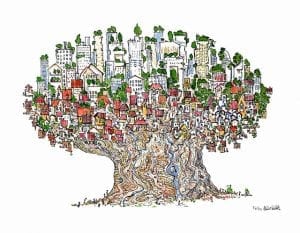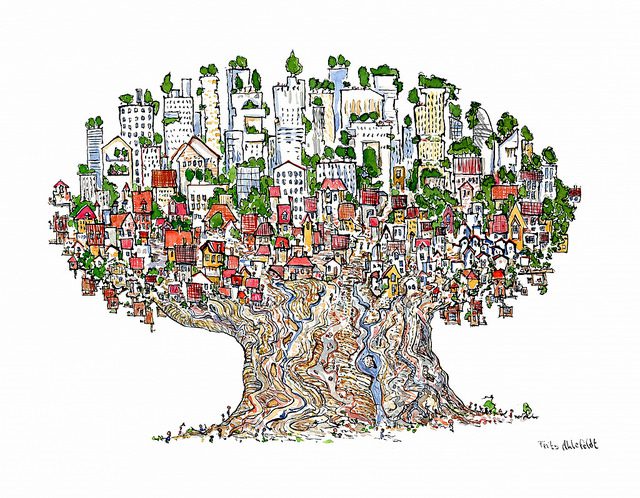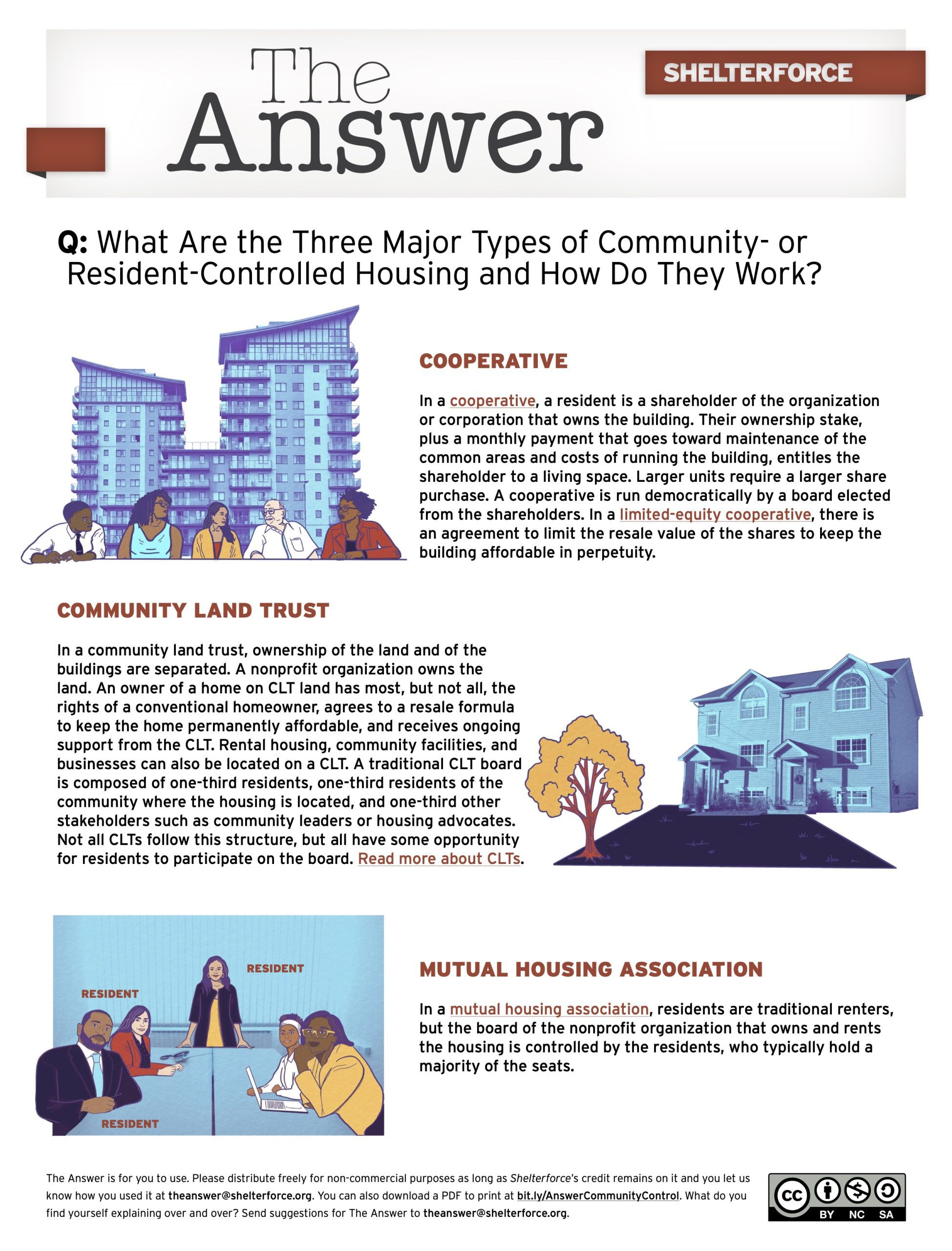
Tree City Architecture. Illustration by Fritz Ahlefeldt via flickr, CC BY-NC-ND 2.0
Community Land Trusts (CLTs) are, understandably, all the rage in community development today, especially in New York, which last year funded six CLTs throughout the state using $3.5 million in bank settlement funds from the financial crisis. Creating a nonprofit to own land and lease it to developers to build housing or community facilities enables communities to maintain permanent affordability, even in rapidly gentrifying areas. But though much fanfare is showered on the CLT model, land trusts often struggle to get off the ground because very little support is available for those trying to create one or for existing CLTs looking to expand.
Too often, community development work is expected to happen organically, with unpaid volunteers—residents of the community who are often the least able to afford to volunteer their time, and specifically people of color who are encumbered by a persistent and growing racial wealth gap—shouldering the burden of starting new initiatives well before funders decide to invest.
Given the power of CLTs to preserve and strengthen community ownership, governments and philanthropists need to get involved early and invest in organizations’ operations and capital work so that critical development can happen more consistently and sustainably. Some funders have already recognized the importance of this work: Citi Community Development, for example, engaged with the City of New York and four nonprofit partners to provide the financial support needed to launch the Interboro CLT, and is actively supporting CLTs in other cities around the country.
Support doesn’t only come from funders’ checkbooks. New York’s success is unique not just because of the number of CLTs it funded, but also because of the community synergies it created. The bank settlement funds also financed a Learning Exchange in New York City in which nine community-based organizations established a network to learn from and support each other as they create and expand individual CLTs. Not many cities have the opportunity to create such a collaborative system. Often, CLTs either work in silos or compete against each other for resources, which makes it harder to succeed.
In many ways, New York was lucky. Not every community has access to a windfall that enables them to support the creation or growth of CLTs. This is a budding model in desperate need of early and significant investment. Who will step in to help and support them?





Comments